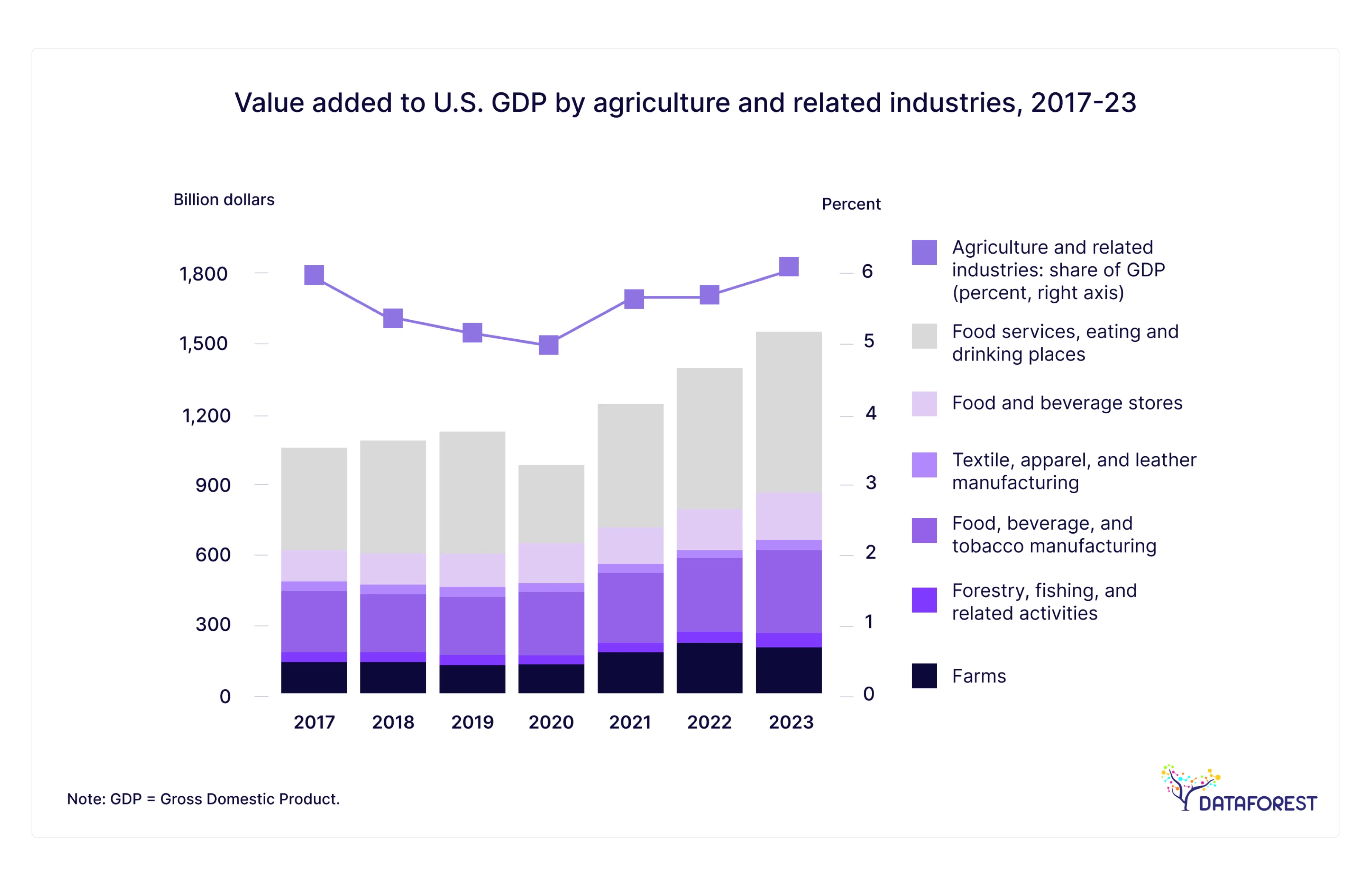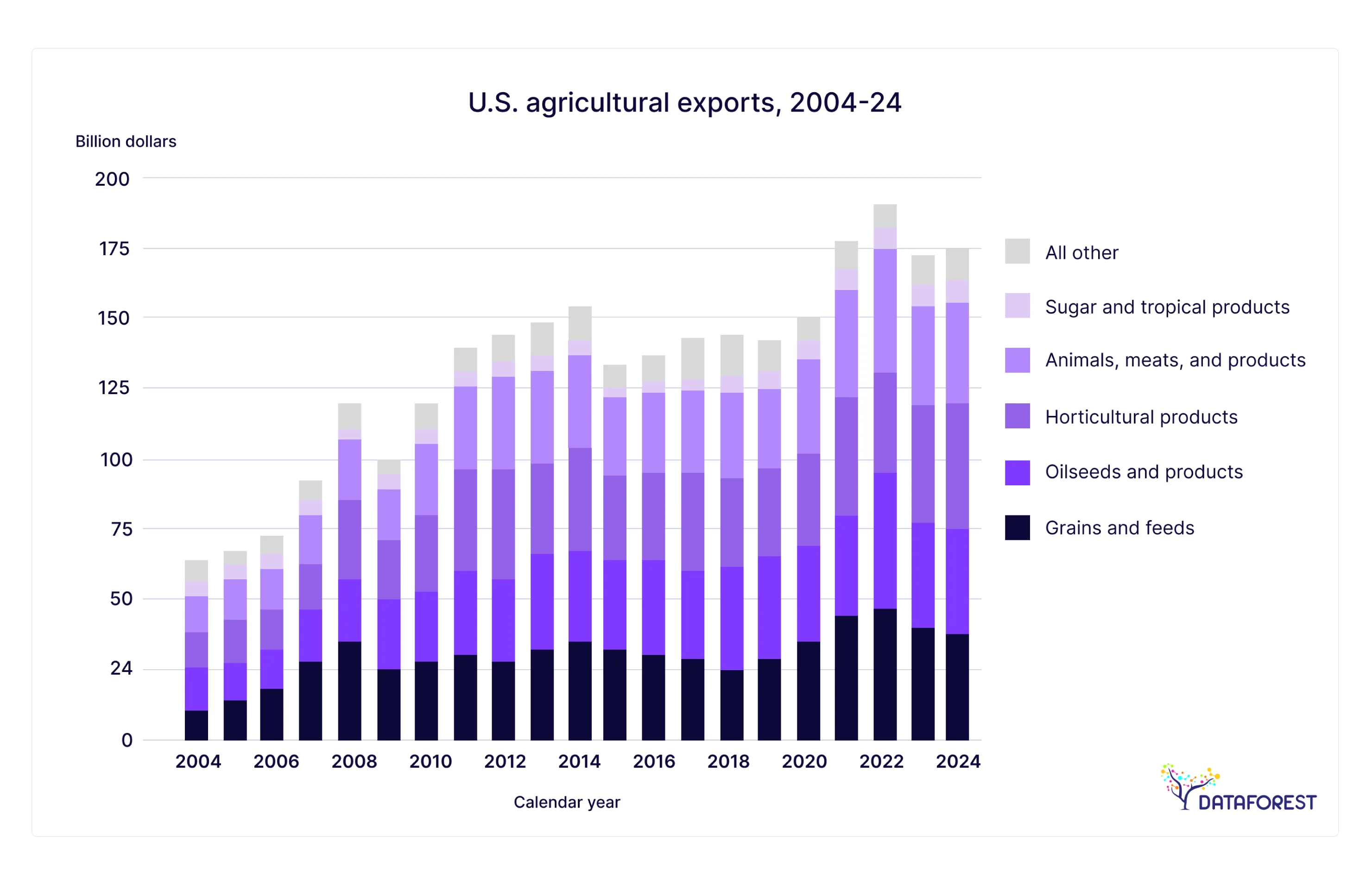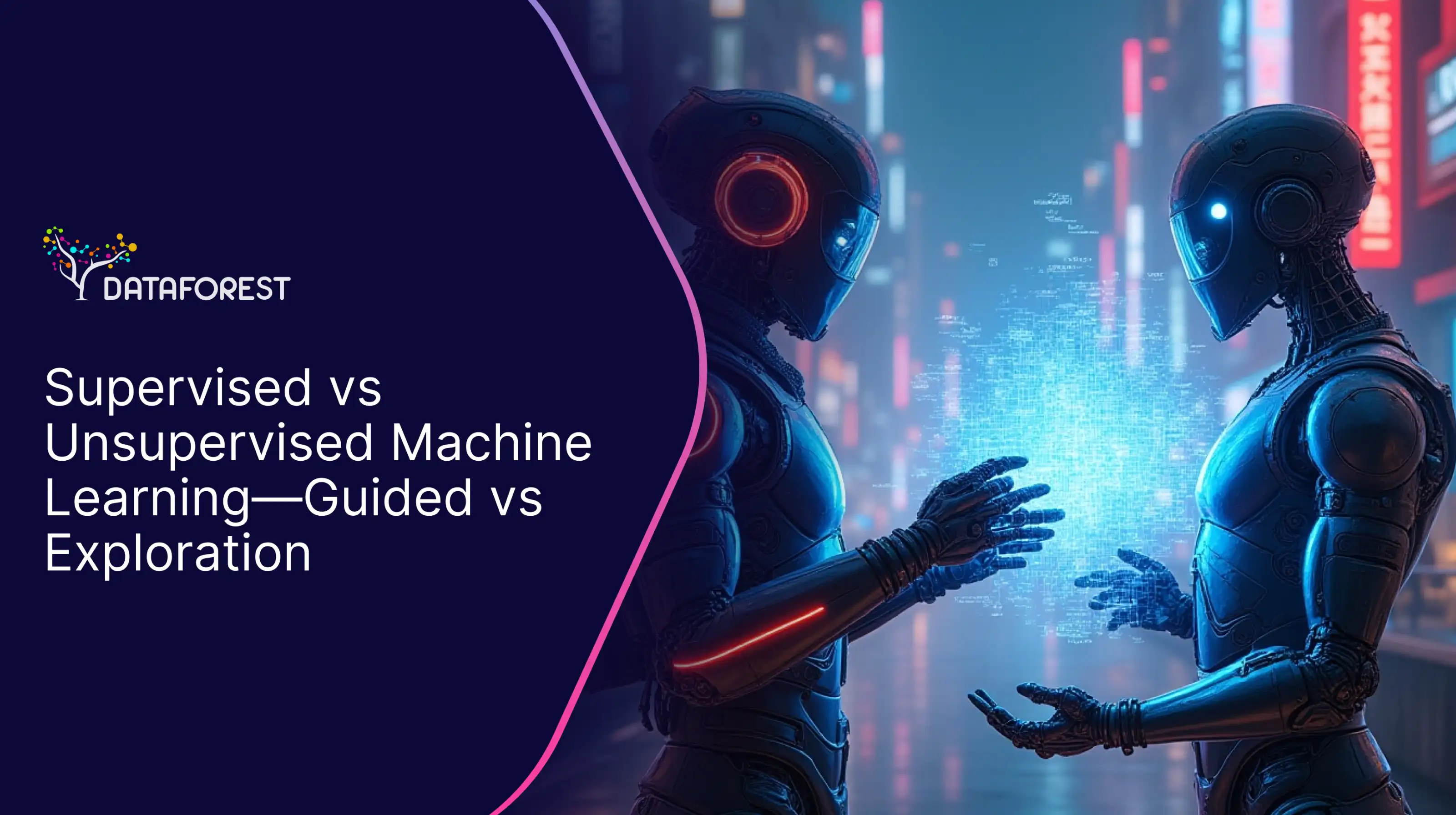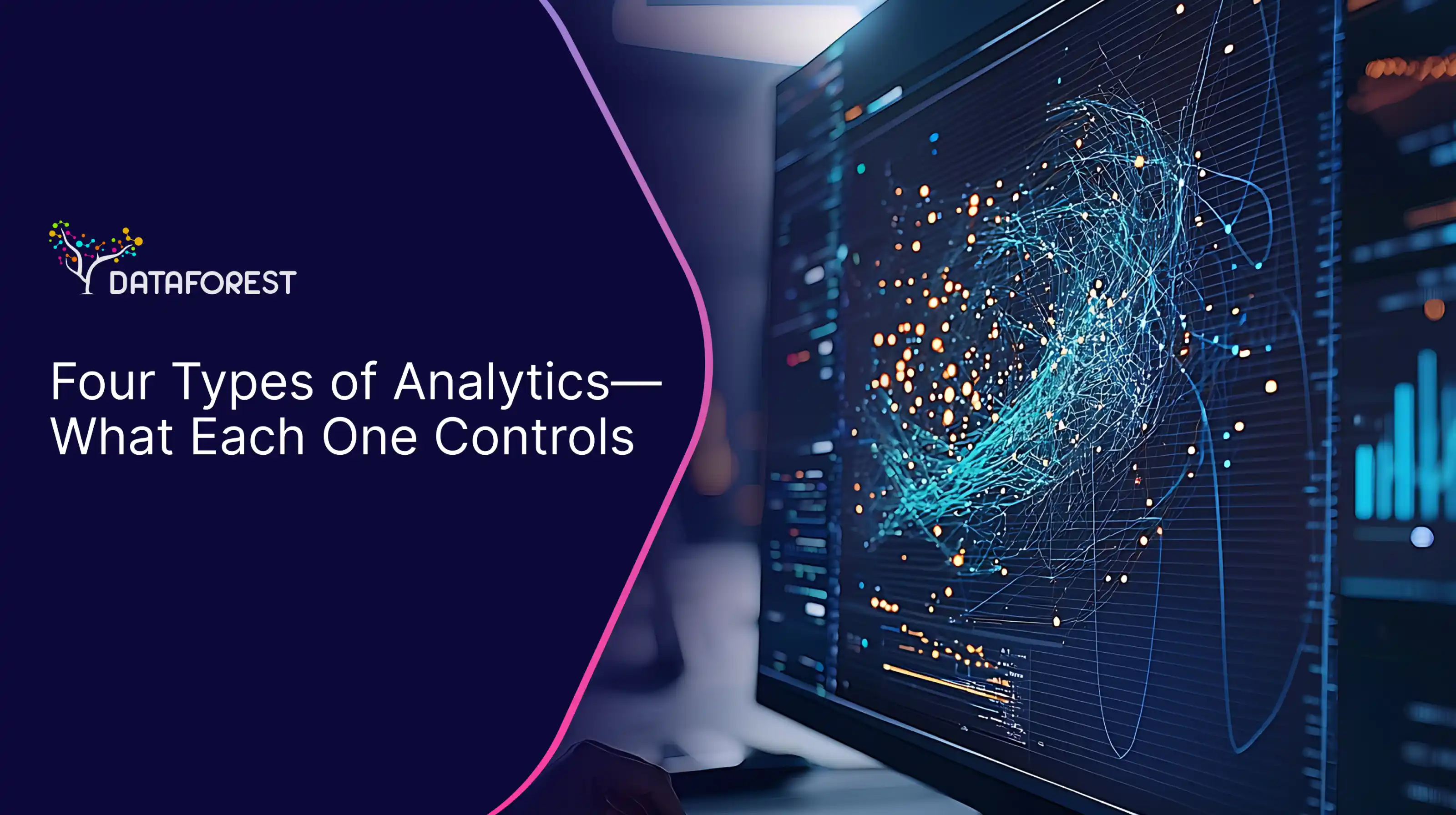From Legacy Fields to Data-Driven Frontiers: The New Agricultural Reality
Let's be direct: the agricultural sector has fundamentally changed. The nostalgic picture of a farmer guided by instinct and the seasons has been replaced by the stark reality of a hyper-complex, high-stakes arena governed by global logistics, precision machinery, and unrelenting financial pressure. For decades, success was a function of acreage and bushels. Now, it's a function of gigabytes and predictive accuracy. For any C-suite executive or operational leader, treating this shift as just another trend is a critical error. Failing to adapt isn’t a missed opportunity; it’s a direct threat to your bottom line, your market position, and your company's future. This conversation isn't about shiny new tech. It’s about leveraging data science in agriculture to build resilient, efficient, and profoundly intelligent operations that can withstand the mounting pressures of a volatile global market.
The $2.4 Trillion Agricultural Transformation: Why Data Science is No Longer Optional
The U.S. food and agriculture sector is an economic titan, contributing an estimated $2.4 trillion to the nation's economy and supporting over 46 million jobs. Yet this colossal industry is facing unprecedented headwinds. Razor-thin margins, supply chain fragility exposed by global events, and increasing climate volatility are squeezing profitability from every angle. In this environment, incremental improvements are no longer sufficient. The only path forward is a fundamental transformation, and the synergy between data science and agriculture is the engine of that change.

Thinking of data science as just another IT expense is a fundamental mistake. This view completely misses its power as a core strategic weapon. The leading agricultural enterprises have stopped debating whether to adopt it and are now building their entire corporate strategy around how to use their data. They understand that the vast streams of data generated from soil sensors, agricultural drones, satellite imagery, and GPS-enabled tractors are not just operational exhaust—they are the most valuable assets they possess. When properly refined and analyzed, these data provide the insights needed to move from reactive problem-solving to proactive, predictive control over every facet of the business.
The Executive's Dilemma: 5 Critical Challenges Threatening Agricultural Profitability
Every executive in the agricultural space grapples with a familiar set of high-stakes challenges. These problems aren’t minor headaches; they are deep, systemic cracks in the foundation of your business that bleed cash and threaten your stability. In today’s market, standing still is the same as falling behind a swarm of leaner, smarter, data-powered competitors.
Challenge 1: Supply Chain Unpredictability
The modern agricultural supply chain looks like a well-oiled machine, but it’s dangerously brittle. One unforeseen event—a port strike, a sudden trade dispute, a key transportation route becoming a chokepoint—can set off a chain reaction of disaster: spoiled inventory, broken contracts, and staggering financial write-offs. The numbers back this up: McKinsey data show a major supply-chain breakdown lasting a month or longer is now a statistical near-certainty every 3-4 years. That’s the reality. Yet most executives are still trying to navigate this with outdated reports, unable to model the downstream impact of a sudden shock without the help of advanced planning systems.
Challenge 2: Equipment Downtime and Maintenance Cost Explosion
The machinery that powers modern agriculture—combines, tractors, sprayers—represents a massive capital investment. A single combine harvester going down during a critical harvest window isn't an inconvenience; it's a direct assault on your quarterly revenue. Running a reactive, "break-fix" maintenance schedule is a recipe for inflated repair bills, excessive overtime pay, and compromised agricultural productivity. The real challenge is breaking free from this cycle and adopting a predictive posture where you fix equipment before it fails, keeping your assets running and earning.
Challenge 3: ESG Compliance Costs vs. Profit Margins
ESG is no longer a "nice-to-have" section in the annual report. It's a hard requirement from investors, regulators, and the market itself. This forces a difficult trade-off for executives: how do you fund investments in climate-smart agriculture and prove sustainable farming practices without eviscerating your profits? The overhead of merely tracking and reporting—from water consumption to fertilizer deployment—is significant. The strategic play is to use data to transform this compliance burden into a source of extreme efficiency and competitive advantage, a challenge seen across diverse sectors like finance and energy.
Challenge 4: Labor Crisis and Operational Inefficiency
Agriculture is facing a permanent labor shortage. The scarcity of skilled and unskilled workers inflates wages and creates friction at every point in the operation. The American Farm Bureau Federation consistently identifies this as a primary threat to producers. This lack of manpower means every inefficiency is magnified. Every hour squandered on manual data entry, poor scheduling, or clumsy resource deployment is money vanishing from your bottom line. The pressure to implement intelligent workflow automation and smarter farm management is immense.
Challenge 5: Technology Investment Without Clear ROI
The agritech marketplace is a deluge of "game-changing" agritech solutions. From IoT in agriculture to slick farm management software, the choices are overwhelming. Yet, too many executives are stuck in "pilot purgatory," sinking capital into new technologies with no concrete way to measure the return. Without a disciplined, data-first strategy, your tech stack becomes a patchwork of underused tools and siloed information, and the promised efficiencies remain forever out of reach, often due to a failure to establish a custom customer data platform to unify insights.
Data Science Revolution: 7 Game-Changing Applications Delivering Measurable ROI
To beat these challenges, you have to stop guessing. The true role of data science in agriculture is to give you the analytical power to turn these massive, complex problems into clear opportunities for financial gain and operational control. Every data science application in agriculture is designed to deliver tangible results. Here are seven high-impact applications that are delivering those results today.
Predictive Analytics for Crop Yield Prediction
Imagine knowing your potential harvest volume, quality, and optimal timing with a high degree of accuracy weeks or even months in advance. Predictive analytics as a service makes this possible by weaving together disparate data streams: past harvest results, dynamic weather forecasting for agriculture, including sophisticated weather prediction models for drought prediction, live readings from soil monitoring sensors, and analysis from satellite imagery for crop monitoring. Having this foresight sharpens your entire operational plan, from resource buying to sales contracts, giving you a superior negotiating position in the market.
Supply Chain Intelligence and Risk Mitigation
Instead of just reacting to chaos, you learn to see it coming. By analyzing shipping lanes, climate models, geopolitical intel, and historical transport data, machine learning algorithms can flag choke points before they disrupt your flow. This isn’t just about reacting faster; it’s about having the intelligence to sidestep disruptions entirely through sophisticated agricultural risk assessment, transforming your supply chain from a constant source of risk into a resilient, competitive weapon.
Precision Agriculture and Resource Optimization
This is the essence of data-driven agriculture. It's about surgically applying precisely the right resources, in the right place, at the exact right time. Data from remote sensing in farming, GPS, and soil data analysis enables variable rate application of fertilizers and pesticides, and precision irrigation. The result of this fertilizer optimization is a direct, two-fold benefit: input costs drop by a staggering 15-30%, and the reduction in chemical runoff provides a concrete answer to ESG pressures. It’s a rare operational change that simultaneously pads the bottom line and strengthens your sustainability credentials.
Automated Quality Control and Food Safety
Defending your product’s quality and guaranteeing food security is where brand reputation is won or lost. The old way of doing this—manual spot checks—is slow, inconsistent, and prone to error. Computer vision, a practical application of AI and machine learning in data science, executes this task with relentless, superhuman precision. Systems using high-speed cameras and machine learning can inspect and grade produce as it moves, identifying defects with pest detection, sorting by size, and flagging contaminants instantly. This degree of automation slashes labor needs, drastically cuts waste, and serves as a powerful defense against the brand damage of a potential recall.
Market Price Prediction and Strategic Sourcing
Volatility in commodity prices introduces massive financial risk. By analyzing global supply/demand data, futures market activity, and key macroeconomic signals, specialized price‑prediction models and ML algorithms can forecast price movements with a high degree of confidence. This intelligence arms your procurement teams to make brilliant sourcing decisions, locking in favorable costs and hedging effectively against market swings. It elevates the procurement function from a simple cost center to a strategic profit engine.

Livestock Monitoring and Health Management
In any livestock business, animal health is the primary driver of profit. IoT-enabled smart tags provide a nonstop feed of biometric data from every single animal. Livestock monitoring platforms use this data to watch for changes in activity, consumption, and vital signs. This kind of big‑data, advanced‑analytics platform is conceptually similar to the systems that are revolutionizing healthcare insights. AI models are trained to spot the nearly invisible behavioral shifts that signal the onset of illness, triggering an alert for immediate, targeted intervention. This proactive health management cuts mortality rates, brings down vet bills, and boosts the operational throughput of your livestock tracking technologies.
Smart Fleet Management and Predictive Maintenance
Data science takes the operational chaos of managing a large fleet and imposes streamlined, cost-saving order. Analysis of telematics data from your machinery allows you to find the most fuel-efficient routes and monitor operator behavior for coaching opportunities. Most critically, predictive maintenance algorithms use sensor readings to anticipate when a specific part is likely to fail. This intelligence lets you schedule repairs during planned downtime, effectively eliminating the catastrophic cost of an in-field breakdown and extending the life of multi-million-dollar assets.
Implementation Roadmap: Your 90-Day Path to Agricultural Data Science Success
Embarking on a data science journey can feel daunting. Success requires a disciplined, structured approach—not a scattershot of ad-hoc projects. At DATAFOREST, we have refined a five-phase methodology designed to de-risk investment and accelerate time-to-value. This isn't just theory; it's a battle-tested roadmap for turning your raw data into strategic control.
Phase 1: Strategic Problem Identification (Days 1-15)
The first step isn't about data; it's about the business. We start with intensive Generative AI consulting. Our objective is to cut through the noise and identify the one to three critical problems that are truly hemorrhaging profit. Is it supply chain latency? Is it equipment failure during harvest automation? We focus on the issues that, when solved, deliver the maximum financial impact. Most organizations have twenty perceived problems but only a few that truly break the business. We find those.
Phase 2: Comprehensive Data Assessment & Preparation (Days 16-45)
Your data is likely messier and more fragmented than you imagine. In this phase, we conduct a deep-dive data assessment. As an experienced data science company, we map what exists, identify what’s missing, and filter out the "garbage" data that corrupts analysis. We then apply rigorous data preprocessing and cleaning methodologies. This is the unglamorous but absolutely essential foundation of any successful data science initiative. If you get this part wrong, nothing that comes after it will work. Period.
Phase 3: Custom Model Development & Prototyping (Days 46-70)
This is where the transformation begins. As your data science service provider, DATAFOREST builds custom predictive models tailored to the specific problems identified in Phase 1. We don’t use generic, off-the-shelf models that produce vague results. Our approach is to build bespoke analytical engines using advanced techniques that are specifically calibrated to find the unique, profitable patterns hiding in your operational data. This isn't a black box; it's the focused application of mathematics to forge a real competitive advantage.
Phase 4: Rigorous Real-World Validation (Days 71-80)
A model that looks great in a spreadsheet is useless if it shatters on contact with reality. This phase is dedicated to ruthless, reality-based testing. We pit the models against live operational scenarios and historical data to pressure-test their accuracy and resilience. We identify failure points before they can cost you revenue or customer trust. This is a core part of our commitment to delivering robust business applications and data science solutions that work under pressure.
Phase 5: Scaled Deployment & Continuous Optimization (Days 81-90 and beyond)
With the model validated, we move to full data science implementation. The system goes live, integrated into your existing workflows and decision-making processes. This is where the ROI becomes tangible: costs drop, revenue stabilizes, and problems are solved before they escalate. Our partnership doesn’t end at deployment. We provide full implementation support, monitoring performance and fine-tuning the models as new data and new market conditions emerge.
The Competitive Advantage: Why Early Adopters Are Winning
The organizations that commit to data science for agriculture aren't just getting a bit more efficient. They are creating a formidable competitive barrier that latecomers will find nearly impossible to breach. This advantage compounds over time. With every planting and harvest, their predictive models get smarter. With every new sensor that comes online, their operational IQ deepens, generating superior farm insights. This creates a compounding advantage that is nearly impossible for competitors to catch. Better data leads to smarter decisions, which create better outcomes like higher yields and lower costs. This, in turn, generates an even richer stream of proprietary data. Look at a pioneer like John Deere; with its AI-powered "See & Spray" technology, it is no longer just in the business of selling steel. It's selling an agricultural optimization platform. Trying to compete with that using yesterday's farming productivity tools is a losing proposition.
ROI Calculator: Quantifying Your Agricultural Data Science Investment
Figuring out the ROI of a data science project requires an unsentimental look at the true costs and the full spectrum of gains. While the numbers are unique to your business, the formula for thinking about it is universal:
ROI = (Gain from Investment – Cost of Investment) / Cost of Investment
To make this useful, you have to be honest about each variable. Ask yourself these specific questions:
- Revenue Uplift: What is a 5% yield increase or a higher quality grade worth in actual dollars?
- Input Savings: What’s the line-item value of cutting fertilizer use by 20% or water by 30%?
- Operational Savings: What is the hard-dollar cost of unplanned equipment failure, and what do you save by nearly eliminating it?
- Risk Mitigation: What's the financial impact of avoiding one major product recall or one multi-day supply chain halt?
When you map out the variables this way, you build a business case that's impossible to ignore, shifting the internal conversation from "expense" to "essential strategic investment."
Future-Proofing Your Agricultural Business: 2025 and Beyond
The competitive edge you gain from technology today has a shorter shelf life than ever. What seems advanced now will be the standard price of entry by 2025. Effective leaders are executing for this quarter while simultaneously preparing their business for the next wave of change. A few key trends are already taking shape.
Hyper-Automation:
This is the convergence of AI, machine learning, and robotics to create processes that run themselves—from autonomous tractors that plant and harvest to warehouse automation solutions that manage their own inventory. The end goal is to build systems that need human oversight, not constant human intervention.
Generative AI:
This tech will fundamentally change how people interact with complex data. Forget digging through dashboards. Soon, you'll ask a virtual assistant, "Given the 72-hour forecast and current moisture in sector four, what's the optimal irrigation plan to maximize yield but stay under our water allocation?" and get an instant, actionable strategy. These tools, often deployed as a custom Copilot, can revolutionize reporting and analysis, similar to successful case studies with AI chatbots.
Data Interoperability and Ecosystems:
The future is not siloed data. It's about seamless data sharing between growers, suppliers, equipment manufacturers, and buyers to create a transparent, hyper-efficient ecosystem. This requires robust platforms for custom data management and analytics for financial advisory and other industries.
Proactively digging into these domains now, perhaps starting with a focused Gen-AI integration project, is how you build a business that will dominate the next decade, not just survive it.
Charting the Course for a Resilient Future
The agricultural industry is at a fork in the road. One path continues toward a future of razor-thin margins, where companies are constantly blindsided by market shocks and operational failures. The other path—the one illuminated by data and intelligence—leads to a future defined by resilience, predictability, and durable profits.
The role of data science in agriculture has moved beyond academic discussion. It is now the central strategic question for every leadership team. It is the most powerful tool available for turning raw uncertainty into actionable insight and systemic risk into competitive opportunity. This journey starts with one clear decision: to systematically replace assumption with data, intuition with analysis, and reaction with prediction. The moment to set that course is now. When you're ready to see how a disciplined farm data science strategy can remake your business, we invite you to contact us.
Frequently Asked Questions (FAQ)
1. How quickly can we expect a return on investment (ROI) from agricultural data science initiatives?
The ROI timeline is often shorter than you'd think. When you target high-cost areas first—like fertilizer optimization or predictive maintenance on expensive machinery—you can see hard-dollar savings within the first 6 to 12 months. Broader projects like a full supply chain overhaul take longer but deliver exponentially larger returns. A disciplined 90-day implementation plan is key to hitting those early wins fast.
2. What are the first steps for integrating data science into our agricultural operations?
The most critical first step is strategic problem identification. Before buying any software or hiring data scientists, engage in a focused consulting process to pinpoint the 1-3 business challenges where data science can deliver the most significant financial impact. This initial Data Science Consulting phase ensures that your investment is aimed at a real, high-value target from day one.
3. Can we use our existing equipment, or do we need to invest in new machinery for data-driven farming?
In many cases, you can start with your existing assets. Modern farm equipment is often already equipped with numerous sensors that generate valuable data (telematics, fuel consumption, GPS). The initial focus should be on harnessing the data you already have. Over time, strategic investments in new sensors, agricultural drones, or IoT devices can be phased in to enhance your data collection capabilities, but a massive upfront capital expenditure on new machinery is not always a prerequisite.
4. What are the main risks of adopting data science in agriculture, and how can they be mitigated?
Frankly, the biggest risks aren't technical, they're strategic. The main failure points we see are:
- Solving the Wrong Problem: Wasting resources on a project with no meaningful financial impact. You mitigate this with a brutal, honest assessment of your real business pain points before you start.
- Garbage In, Garbage Out: Trying to build models on a foundation of messy, unreliable data. This is avoided with a dedicated data assessment and cleansing phase. There are no shortcuts here.
- Lack of Adoption: Creating a brilliant tool that no one on the operational team actually uses. You prevent this by designing the solution with your end-users, not for them, ensuring it solves their real-world problems. This is a challenge seen in many industries, including retail.
5. Which technologies are essential for implementing data science in modern farming?
A modern data‑science stack in agriculture boils down to four key components:
- Data Collection: The inputs from IoT sensors, remote sensing tools (drones, satellite imagery in farming), and the telematics data from your existing fleet.
- Data Infrastructure: A flexible cloud platform (like AWS, Azure, or GCP) that can handle huge volumes of data without massive upfront hardware costs.
- Analytical Tools: The engine, including platforms for machine learning in agriculture and code written in Python or R to build the models.
- Visualization: BI tools that translate complex agricultural analytics into simple charts and dashboards that a manager can use to make a quick, informed decision.
6. What infrastructure is required to support data-driven agricultural solutions?
The foundational infrastructure is reliable connectivity (especially in rural areas) and a scalable cloud data platform. You don't necessarily need massive on-premise servers. A cloud-based approach allows you to scale your computing and storage resources up or down as needed, making it a cost-effective and flexible solution for handling the large datasets generated by smart farming solutions. Our team at DATAFOREST can help you design the optimal data architecture for your specific needs.






%20(1).webp)















